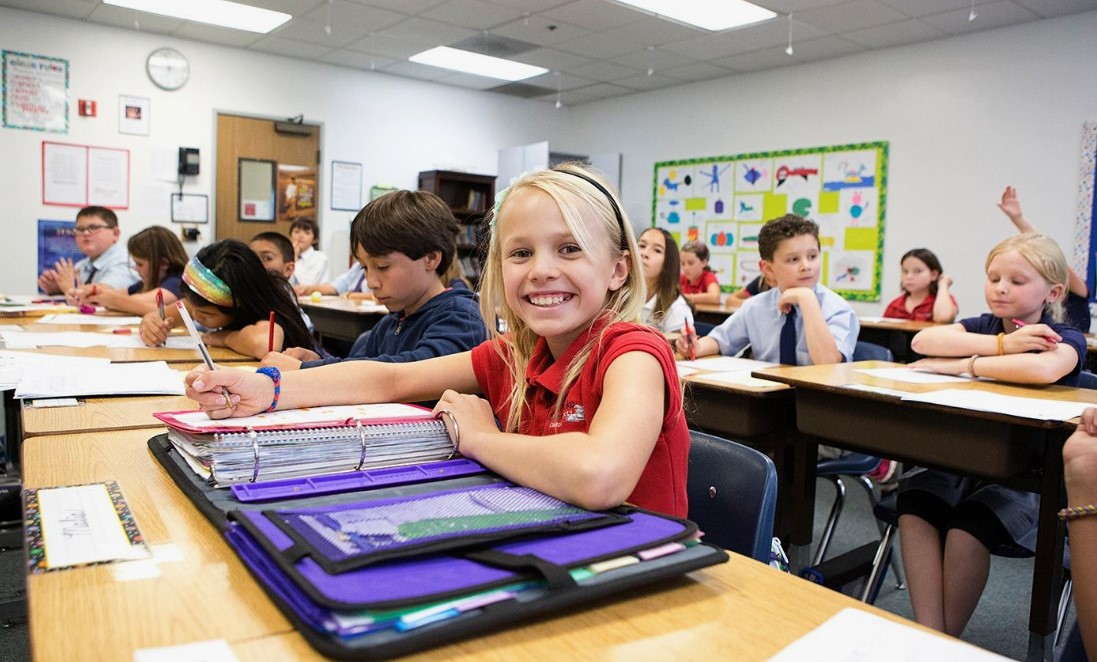The American school system has long been admired for its student-centered approach, flexibility, and emphasis on holistic development. American schools, like City American School, offer students a unique balance between rigorous academics, individual choice, and broad exposure to real-world experiences. This educational philosophy has gained international recognition, with many schools around the world adopting or modeling their curriculum and approach on the American system to cultivate well-rounded, adaptable individuals ready to contribute to society. From kindergarten through high school, each stage of American education is carefully designed to nurture students’ intellectual, emotional, and social growth.
Understanding the American Educational Stages: A Step-by-Step Approach
1. Kindergarten or Pre-School
In American schools, kindergarten or pre-school is typically the first optional stage of education, catering to children aged 4-5. While it’s not mandatory, kindergarten serves as a vital foundation for young learners, providing them with their first experience in a structured educational setting. In these early years, children learn basic literacy and numeracy, social skills, and motor skills through play-based learning. This preparatory stage helps ease the transition into elementary school, teaching children to follow routines, listen to instructions, and work collaboratively with peers. Research highlights that early childhood education lays a strong foundation for future academic success, emphasizing the importance of kindergarten in the American education system.
2. Elementary School (Grades 1-5)
Elementary school marks the beginning of formal education in the United States, covering grades 1 through 5. In these formative years, students focus on fundamental academic subjects like reading, mathematics, science, and social studies. Additionally, they engage in physical education, creative arts, and various extracurricular activities, providing a balanced approach to learning. The curriculum aims to develop essential skills such as problem-solving, critical thinking, and communication. Elementary schools often emphasize teamwork and creativity, nurturing a positive learning environment where students feel safe, encouraged, and motivated. Furthermore, a dedicated teacher is typically responsible for guiding students through multiple subjects, allowing them to build strong relationships that foster both academic and emotional support.

3. Middle School or Junior High School (Grades 6-8)
Middle school, which spans grades 6 to 8, serves as a transitional phase between elementary and high school, catering to students aged 11-14. During this period, the curriculum is structured to deepen students’ understanding of core academic subjects while also encouraging them to explore elective courses such as art, music, foreign languages, and computer science. Electives allow students to start identifying personal interests and potential career paths, setting the stage for more specialized study in high school. Middle school is also a time of significant social and emotional development. Students navigate more complex social dynamics, and schools often provide support systems, such as guidance counselors, to help them manage the challenges of adolescence. Many middle schools also introduce students to a more structured timetable, with different teachers for each subject, preparing them for the autonomy and responsibility expected in high school.
4. High School or Senior High School (Grades 9-12)
High school represents the final stage of K-12 education, encompassing grades 9 through 12. Here, students have considerable flexibility in selecting their courses, especially in the later years. In addition to required core subjects—such as English, math, science, and social studies—students can choose from a wide array of electives and advanced placement (AP) courses, which offer college-level content and the opportunity to earn college credits. The American high school experience is unique for its combination of academic rigor and broad choice, allowing students to tailor their education to suit their aspirations and interests. High school also provides opportunities for students to participate in clubs, sports teams, and extracurricular activities, which play a crucial role in developing leadership, teamwork, and time-management skills.
Most high schools in the United States are organized by a credit system, where students must accumulate a specific number of credits to graduate. For example, one year-long course might be worth 5 credits, and a semester course would be worth 2.5 credits. These credits are essential for meeting graduation requirements and influence college admissions, encouraging students to take their studies seriously and actively participate in their education.
Key Aspects of the American Curriculum and Learning Environment
1. Semester System
The academic year in American schools is divided into two semesters, typically lasting 16-18 weeks each. The semester system allows for a balanced distribution of coursework, assessments, and activities. Classes usually last between 5 to 6 hours daily, with a lunch break. Afternoons are often dedicated to sports, clubs, and socially productive activities, emphasizing the importance of holistic development beyond academics.
2. Flexible Curriculum and No National Standard
One of the most distinctive features of the American education system is the lack of a rigid national curriculum. Instead, general guidelines are established at the state level, with specific curricula and teaching methods varying widely across districts and individual schools. This decentralized approach enables schools to adapt to local needs, resources, and community values. Although there are standard subject requirements, each school retains flexibility in how it structures lessons and assessments, allowing for innovative teaching approaches that cater to diverse student populations.
3. Credit-Based Learning System
High schools in the United States operate on a credit system, where students earn credits based on the courses they complete. This system allows for a customized education, encouraging students to focus on areas of strength and interest while meeting graduation requirements. Credits are also a key component in college admissions, as they reflect a student’s academic rigor, consistency, and preparedness for higher education.
4. Extracurricular Activities and Well-Rounded Development
American schools place a strong emphasis on extracurricular activities as a core element of student development. From sports teams to theater, music ensembles, and academic clubs, these activities provide students with an opportunity to explore their passions, develop leadership skills, and build self-confidence. Participating in extracurriculars also enhances students’ college applications, demonstrating commitment, teamwork, and discipline.
5. Inclusion and Support for Students with Special Needs
American schools are renowned for their commitment to inclusivity. Students with special needs, including those with physical disabilities, learning disabilities, and neurodiverse conditions, are integrated into regular classes. Schools provide additional support as needed, such as assistants, specialized teachers, and individualized education plans (IEPs), ensuring that all students receive equal access to education. This inclusive approach fosters empathy, understanding, and collaboration among students and prepares them for a diverse and inclusive society.
6. Physical Education and Health
Physical education is an integral part of the American curriculum, with students required to participate in physical activities several times per week. By offering various sports, fitness programs, and health education, schools aim to promote lifelong wellness and instill healthy habits. Physical education classes often cover a range of activities, from team sports to individual fitness, ensuring that students have the opportunity to explore physical activities that resonate with them.
7. Personalized Learning and Individualized Support
The American education system values personalized learning, tailoring the educational experience to meet each student’s unique strengths, challenges, and goals. Teachers and support staff work closely with students to identify areas where they may need extra help or advanced materials, fostering an environment of continuous growth and encouragement. This individualized approach has proven effective in helping students reach their full potential, particularly in cases where students may face learning difficulties or require additional guidance.
8. Experiential Learning and Global Exposure
Many American schools prioritize experiential learning opportunities, such as international exchange programs, volunteer projects, and scientific expeditions. Students often have the chance to participate in activities like cultural immersion trips, internships with local companies, and community service projects that broaden their perspectives and prepare them for life beyond the classroom. Some schools even offer “semester away” programs where students study abroad, gaining exposure to different cultures and learning to navigate new environments independently.
9. Career-Oriented Programs and Real-World Projects
American high schools frequently partner with local businesses, nonprofits, and government organizations to provide students with hands-on experiences that enhance their career readiness. Through summer internships, mentorship programs, and career-oriented electives, students acquire valuable skills and insights into potential career paths. Schools also offer career counseling services, helping students identify their strengths and interests, and guiding them toward post-secondary options that align with their goals.

City American School (CAS) in Ajman: An Exemplary Model
City American School (CAS) in Ajman is a notable example of an American-curriculum school that embodies the principles of American education within a diverse, multicultural setting. CAS provides a rich educational experience, balancing rigorous academics with an emphasis on creativity, inclusivity, and character development. The school’s faculty and staff work collaboratively to support the spiritual, social, emotional, and intellectual growth of each student, creating an environment where children feel encouraged to explore, imagine, and experiment.
At CAS, students engage in a curriculum that includes core academic subjects alongside extracurricular programs designed to foster well-rounded development. Activities range from sports and creative arts to volunteer projects and leadership clubs, enabling students to pursue their passions and develop essential life skills. CAS offers flexible tuition rates depending on the grade level, with tuition for grade 3 costing approximately AED 21,900 annually. This investment reflects the school’s dedication to providing a high-quality, American-style education that prepares students for success in an increasingly globalized world.
Conclusion: The Benefits of an American Education
The American school system is distinguished by its adaptability, inclusivity, and comprehensive approach to student development. With its emphasis on academic rigor, personalized learning, and diverse extracurricular opportunities, American education aims to shape responsible, independent, and capable individuals ready to face the challenges of a complex world. Schools like City American School in Ajman exemplify this commitment, providing students with a nurturing and dynamic environment that encourages creativity, character, and academic excellence.
The American curriculum’s focus on both intellectual and personal growth equips students with the skills they need to succeed in higher education and beyond. By prioritizing critical thinking, collaboration, and real-world experiences, American schools prepare students not just to excel academically but to contribute meaningfully to their communities and society at large. Whether through the development of empathy in inclusive classrooms, the leadership skills honed in extracurricular activities, or the career-readiness fostered through experiential learning, the American education system remains a model for nurturing the well-rounded, forward-thinking individuals of tomorrow.

Cyclist, follower of Christ, ukulelist, Mad Men fan and Guest speaker. Operating at the fulcrum of aesthetics and elegance to craft meaningful ideas that endure. I work with Fortune 500 companies and startups.



